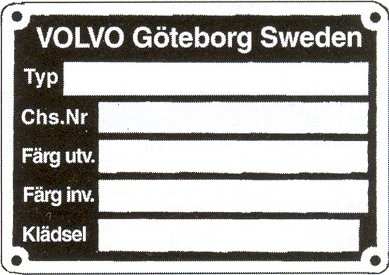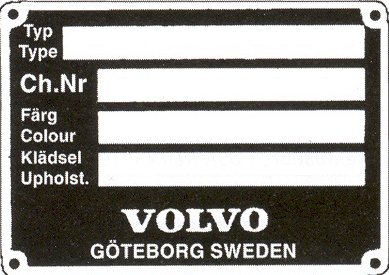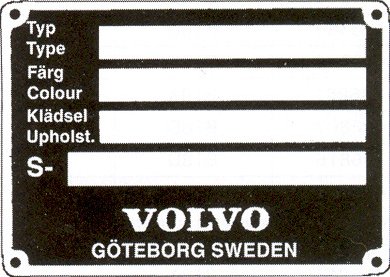|
What came first; the chicken or the egg? Here's my definitive story on Volvo chassis and body numbers. This comes from a Swedish friend who actually worked at the Torslanda factory before he entered military service (conscription).
First, the body number is something like an internal Volvo number and has no bearing on the chassis number. This is inconsistent at best and sometimes is higher than the chassis number, as on both of my 1953 PV444s and less than the chassis number on my 1960 Amazon-S. It was assigned when the car first started production, or was planned to start. I toured the Torslanda plant a few years ago and at every stage (body, paint, final assembly, test track) a car might randomly be taken "off the line" for either a defect, random sampling or other faults.
Now for the chassis number on the V.I.N. plate. This was abandoned in August 1966 (66/67 production year), coinciding with the introduction of the "besiktning" that was introduced in Sweden in 1965. The "besiktning" is the Swedish annual inspection process, to ensure the car is mechanically fit and compliant before being granted the sticker to authorize its licensing. Pre-1965 this was a circular disk that you kept in a holder attached to the driver's side sun visor. Afterwards, it was a sticker attached to the passenger side no-draft window. Before that time, even in Sweden, it was noticed that often the chassis number plate did not necessarily match the actual car. Surprise! In 1966, Volvo was forced to stamp the chassis number into a permanent part of the car and this has now evolved to a "tamper proof" (in theory) V.I.N. label.
Here's a quick pictorial evolution of the Volvo VIN plate, taken from the PV-klubben Faktabok (factbook):
Up until 1953 
From 1953-1958 
From 1958-1966 
After Aug.1966 
So, hopefully this has helped to resolve that issue about body number and chassis number confusion. Of course this will never stop the prior practice of swapping VIN plates on pre-67 Volvos!
--
Cam a.k.a. CVOLVO.COM
|





